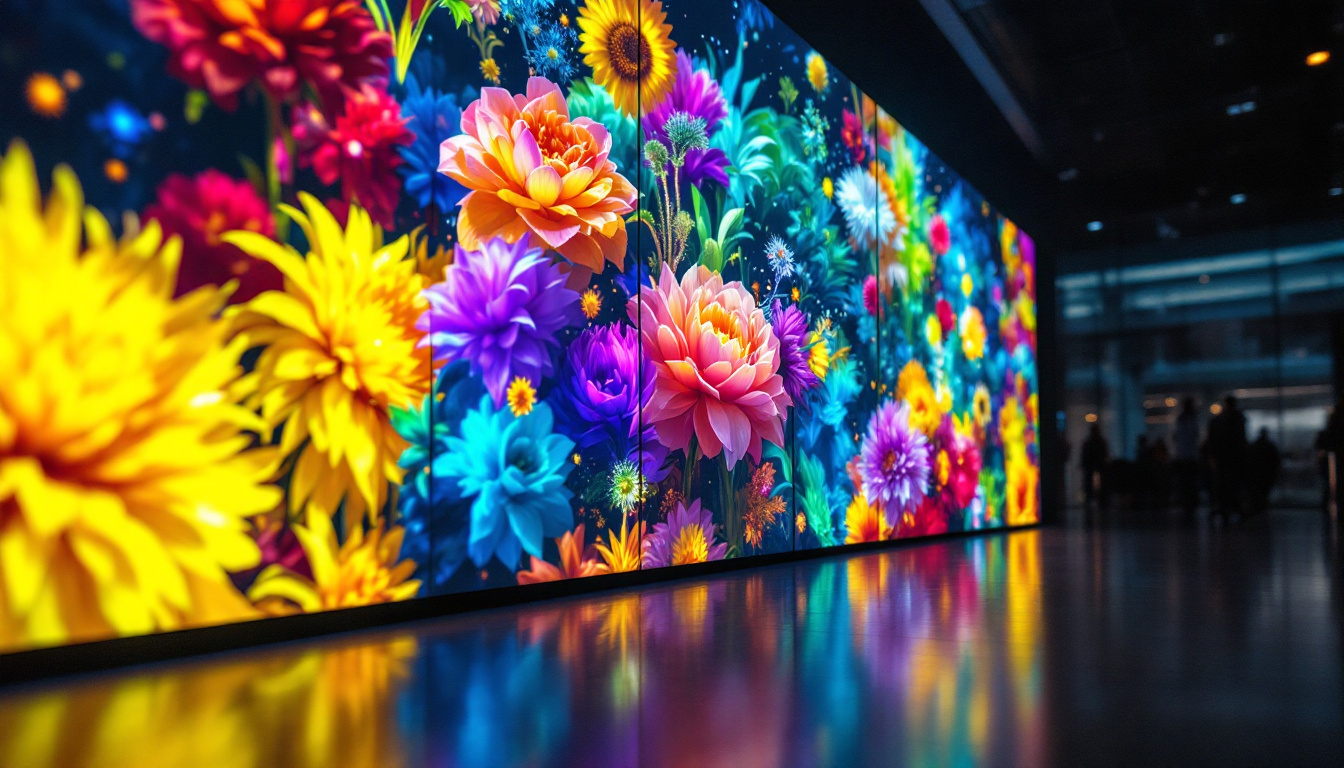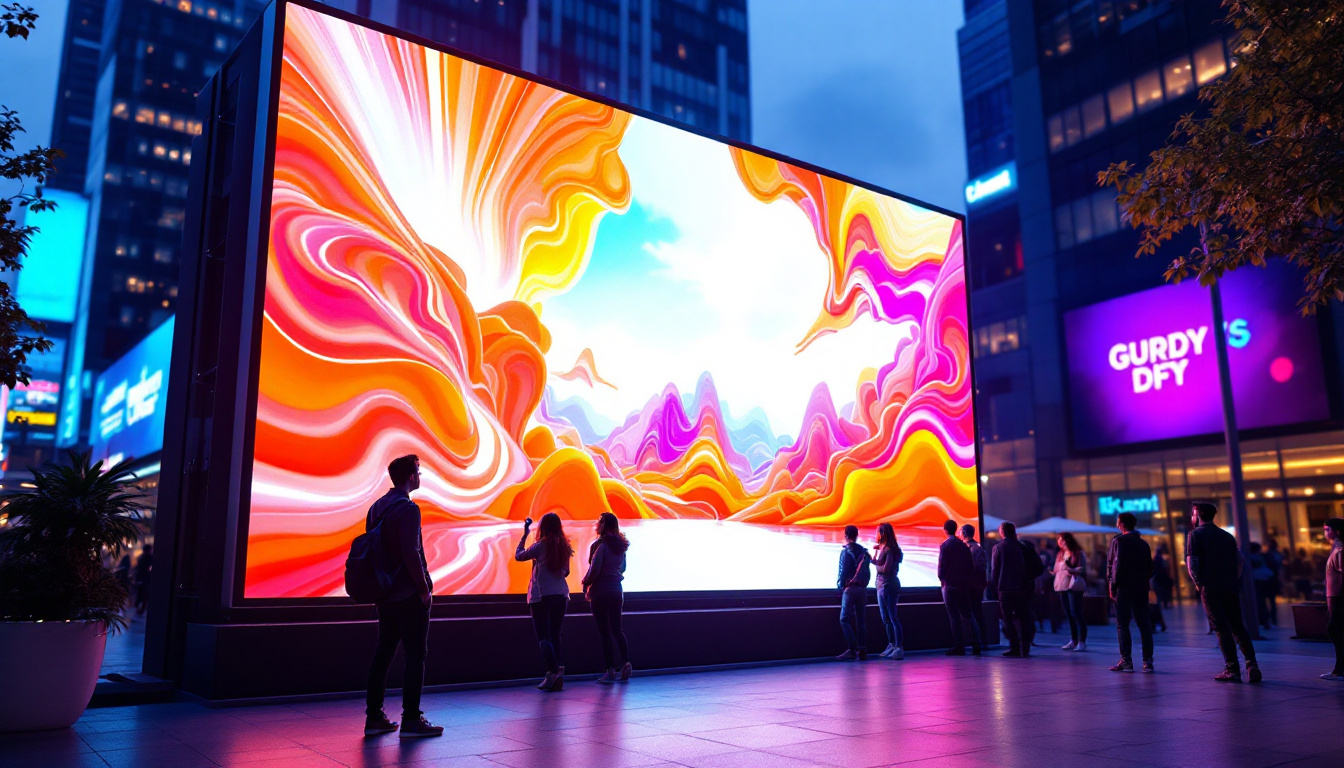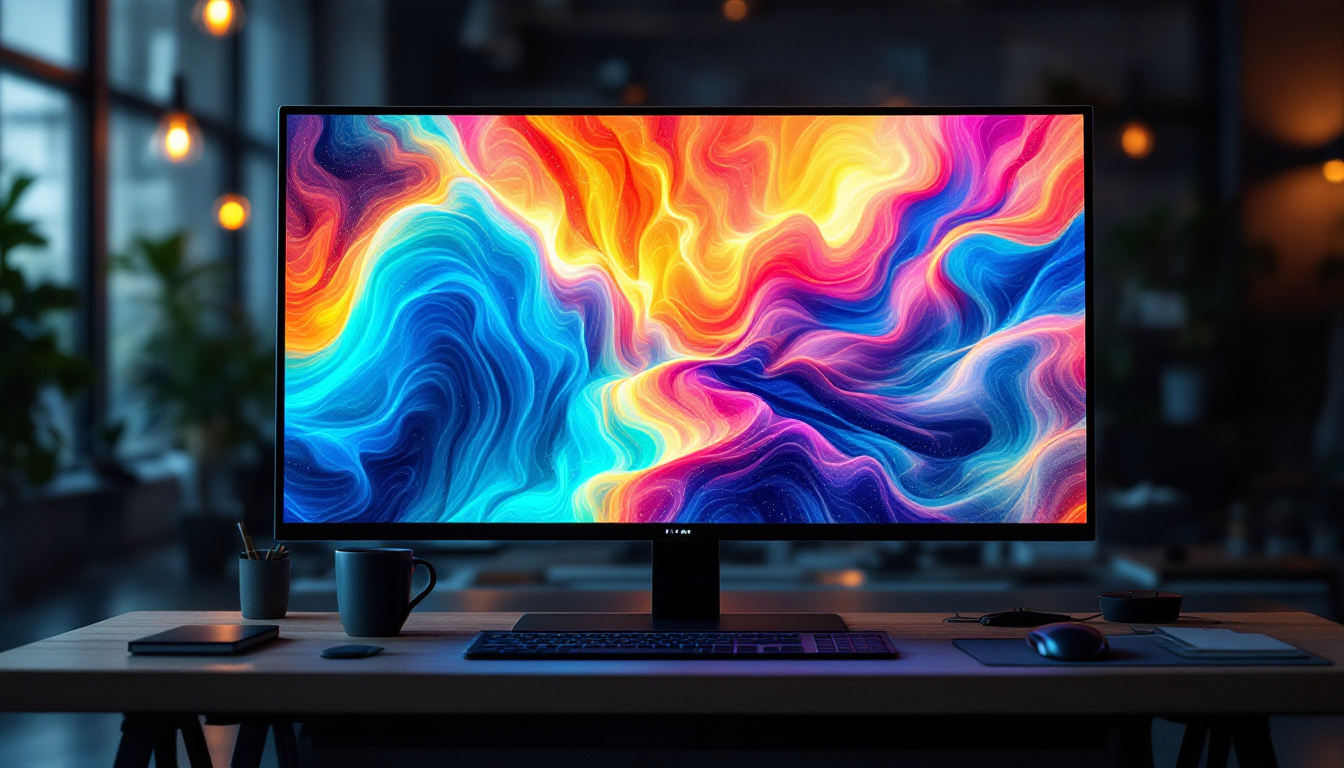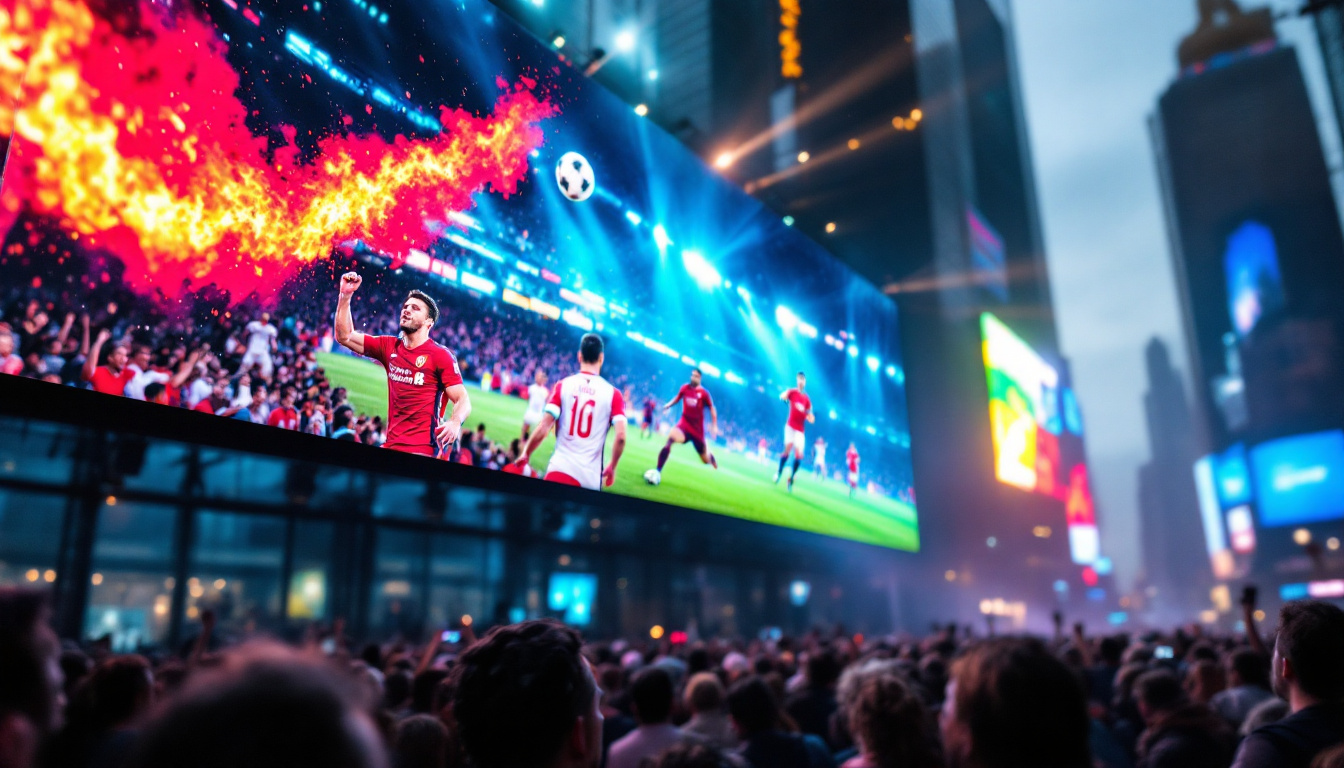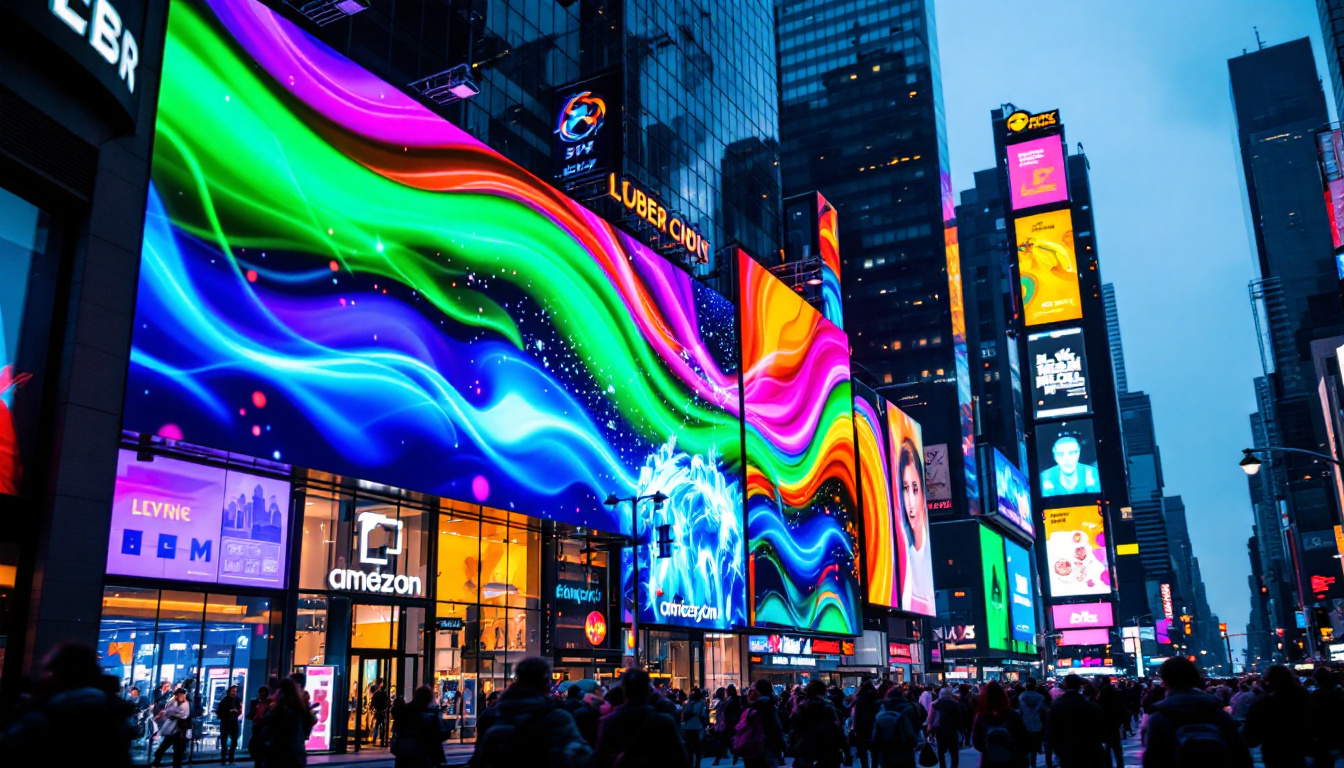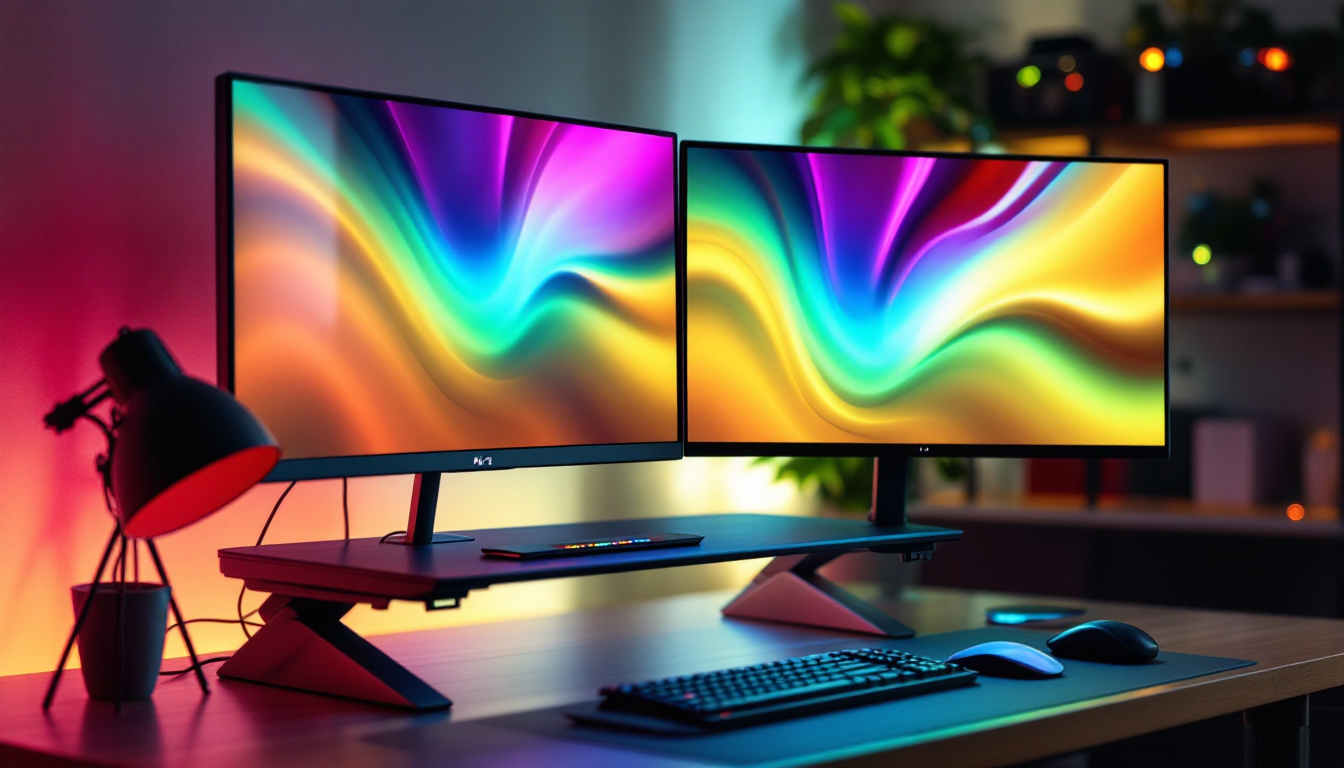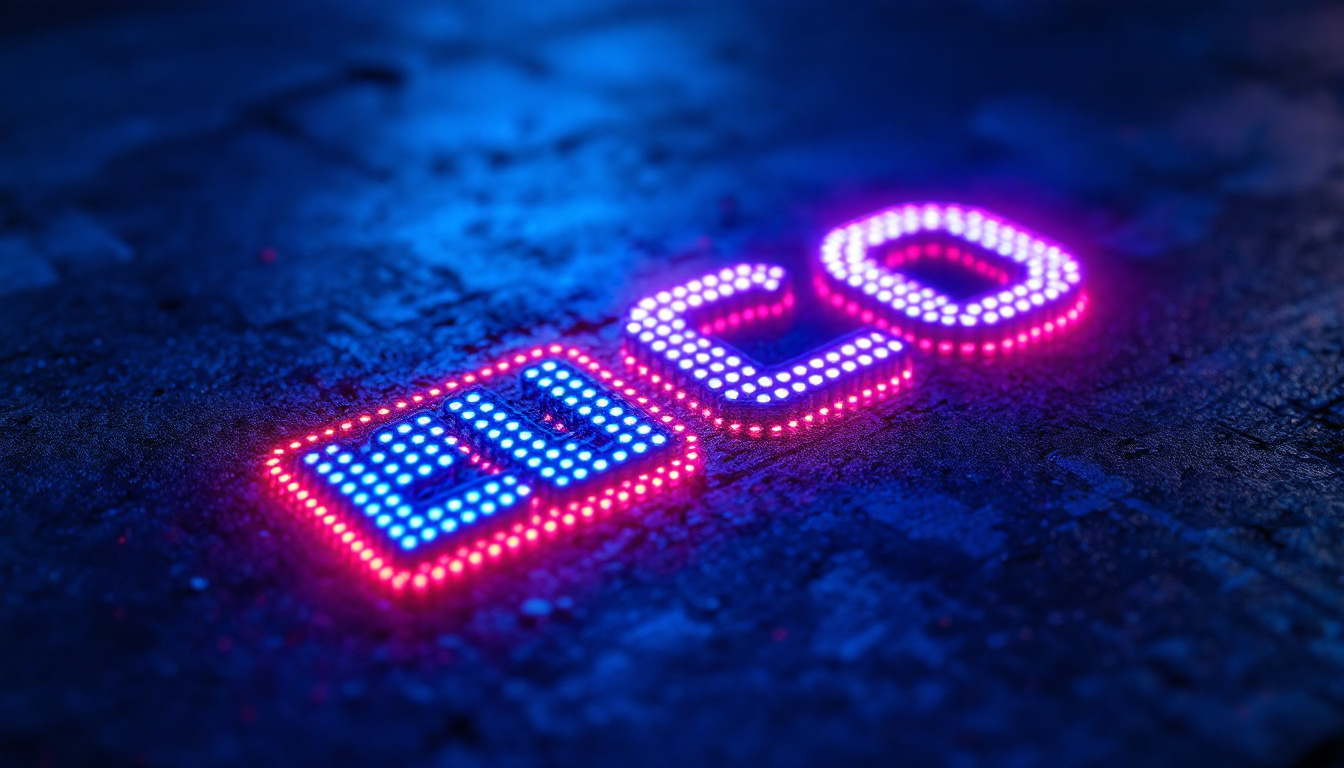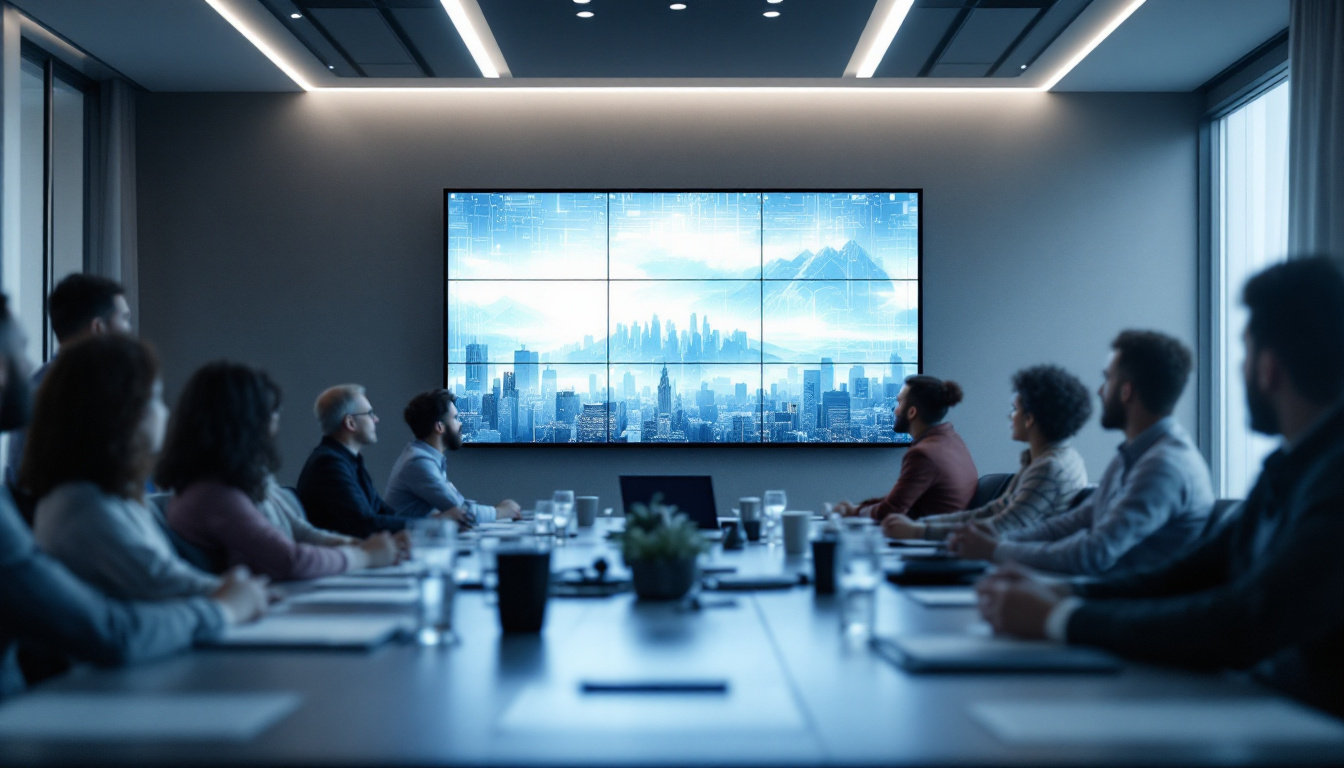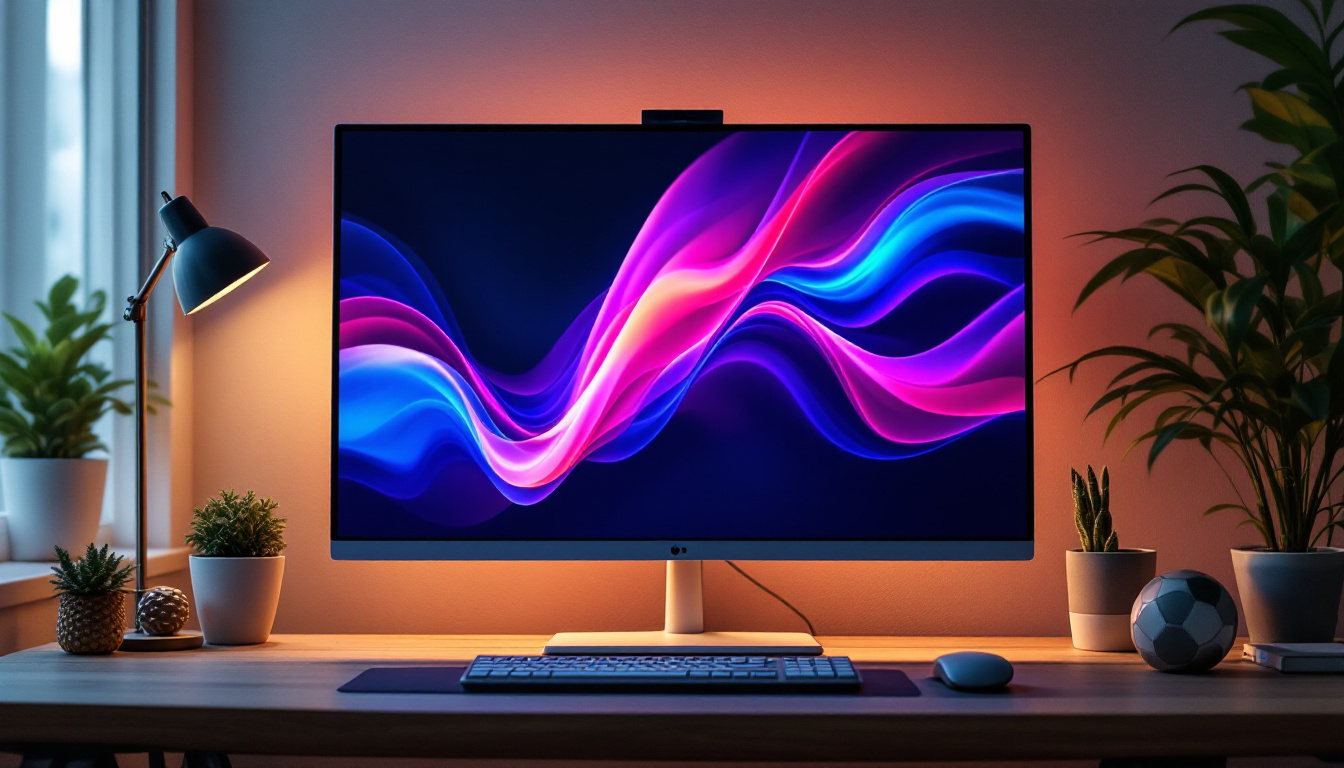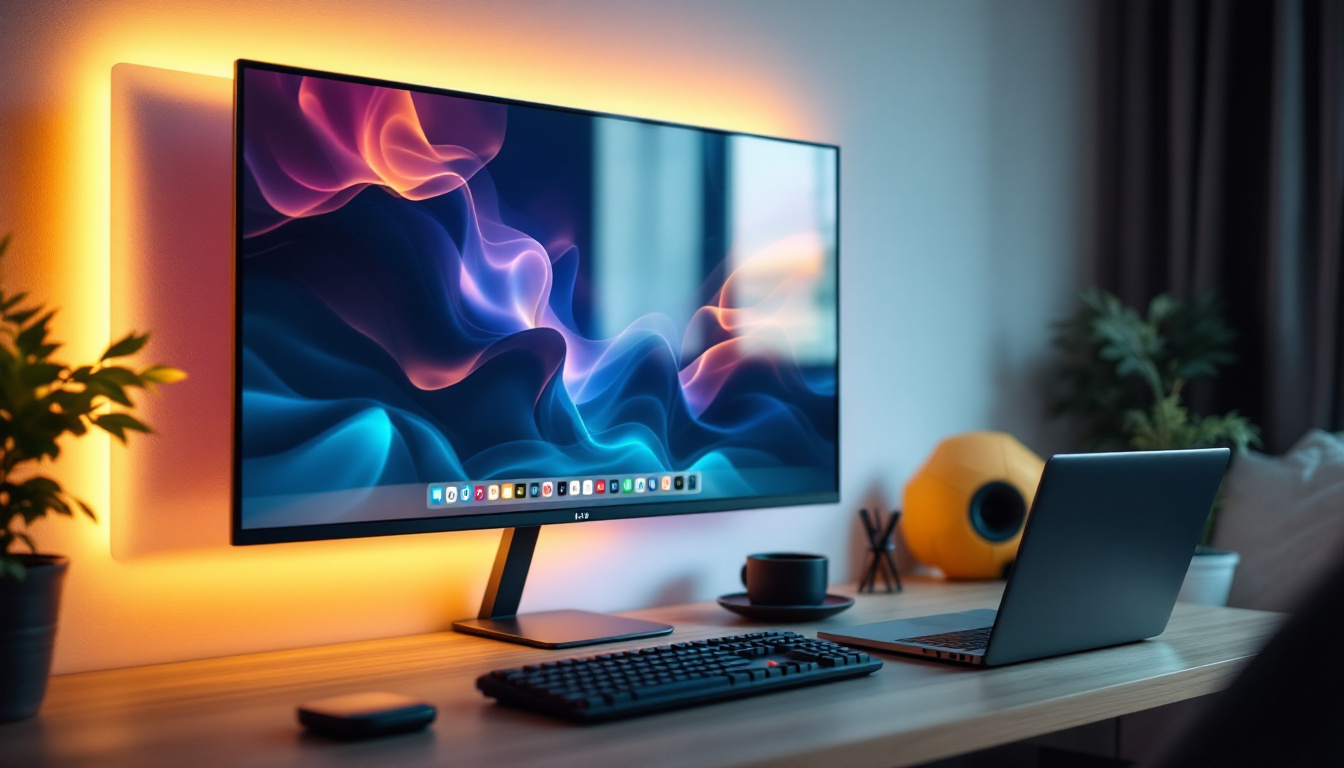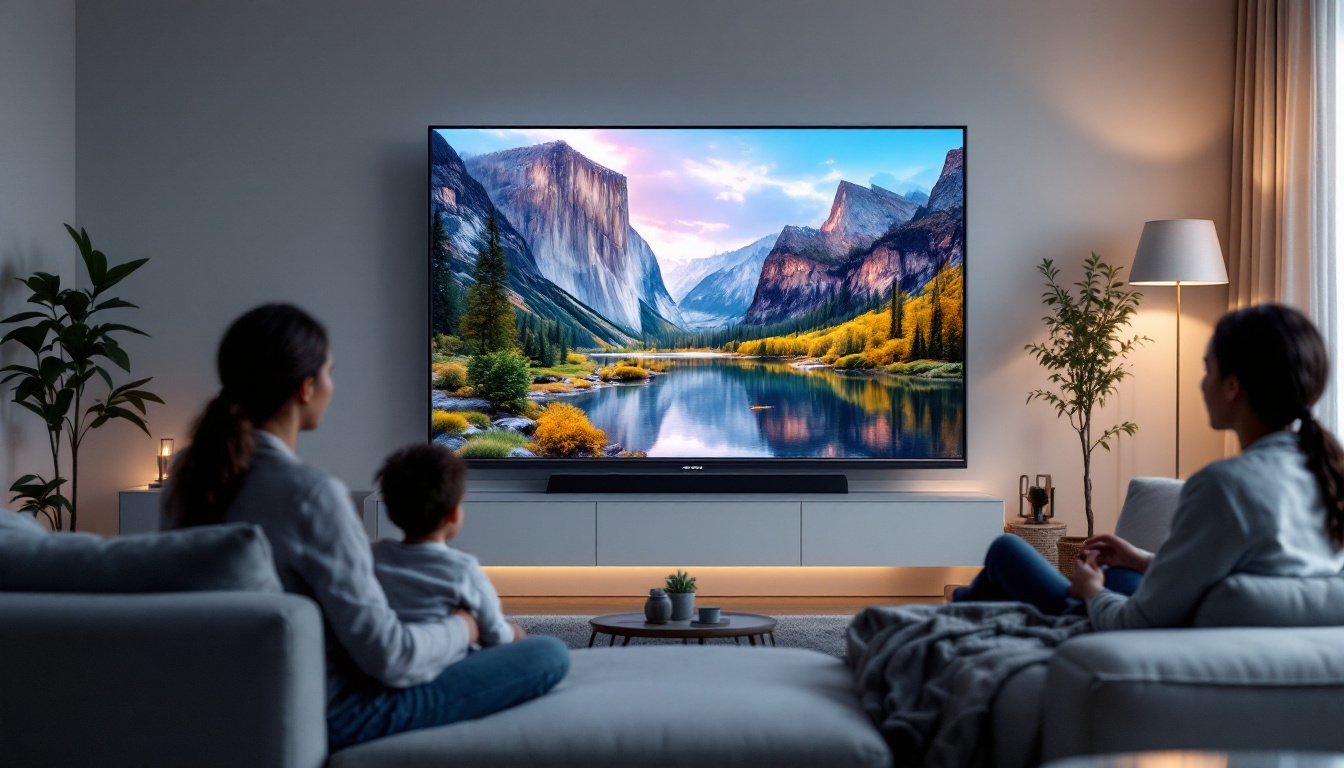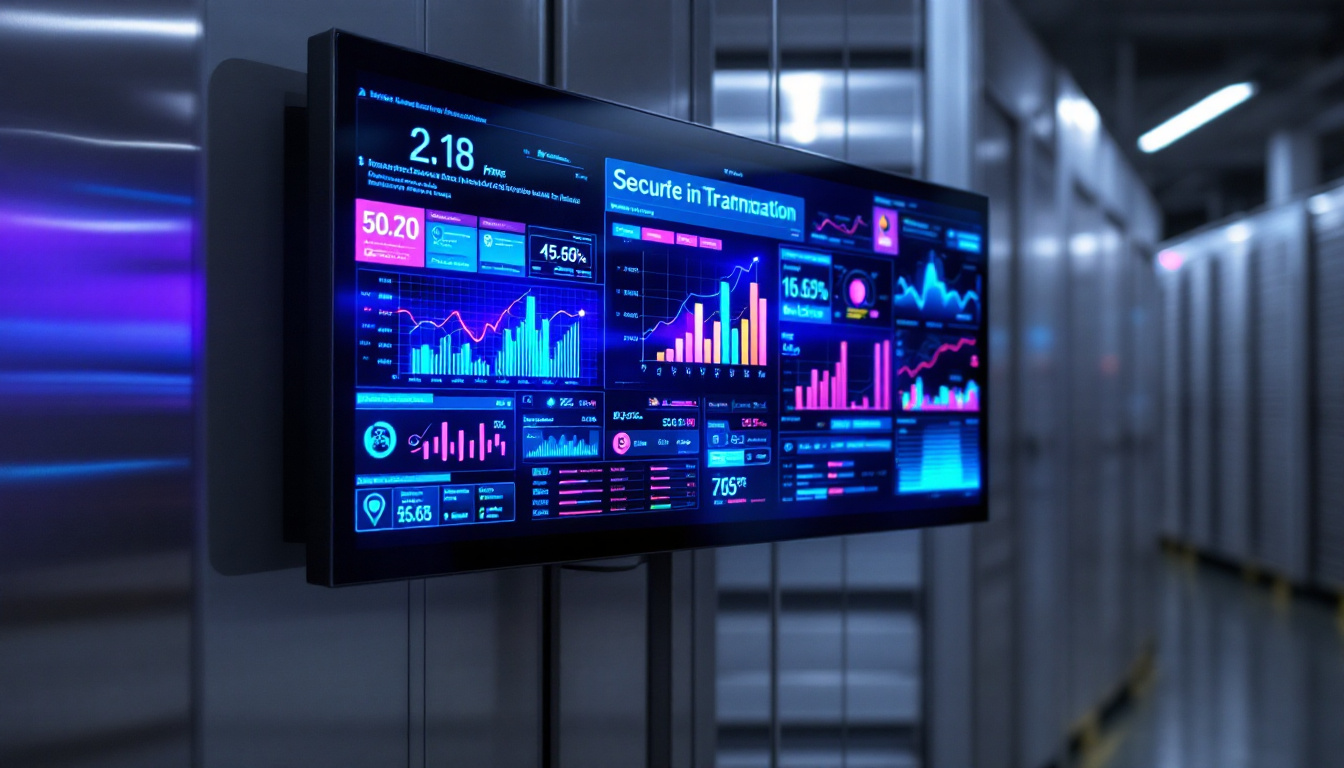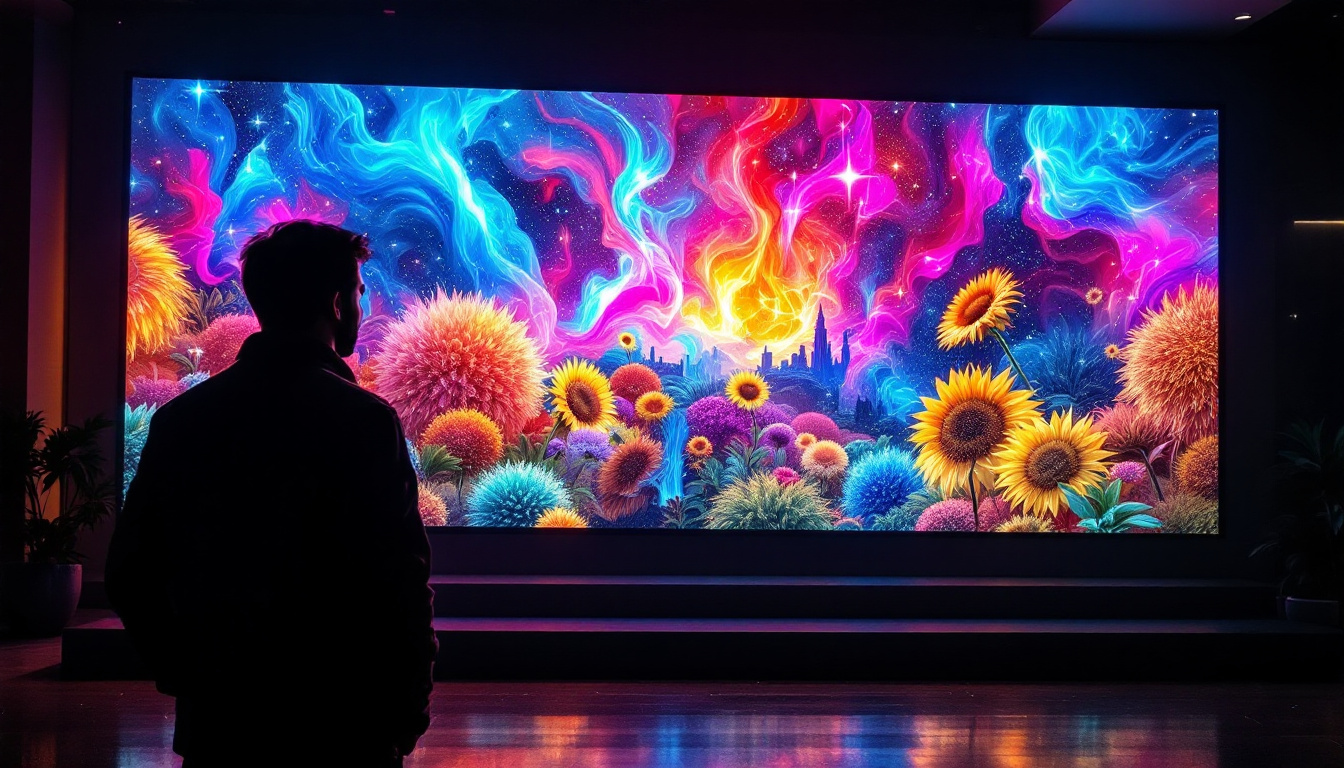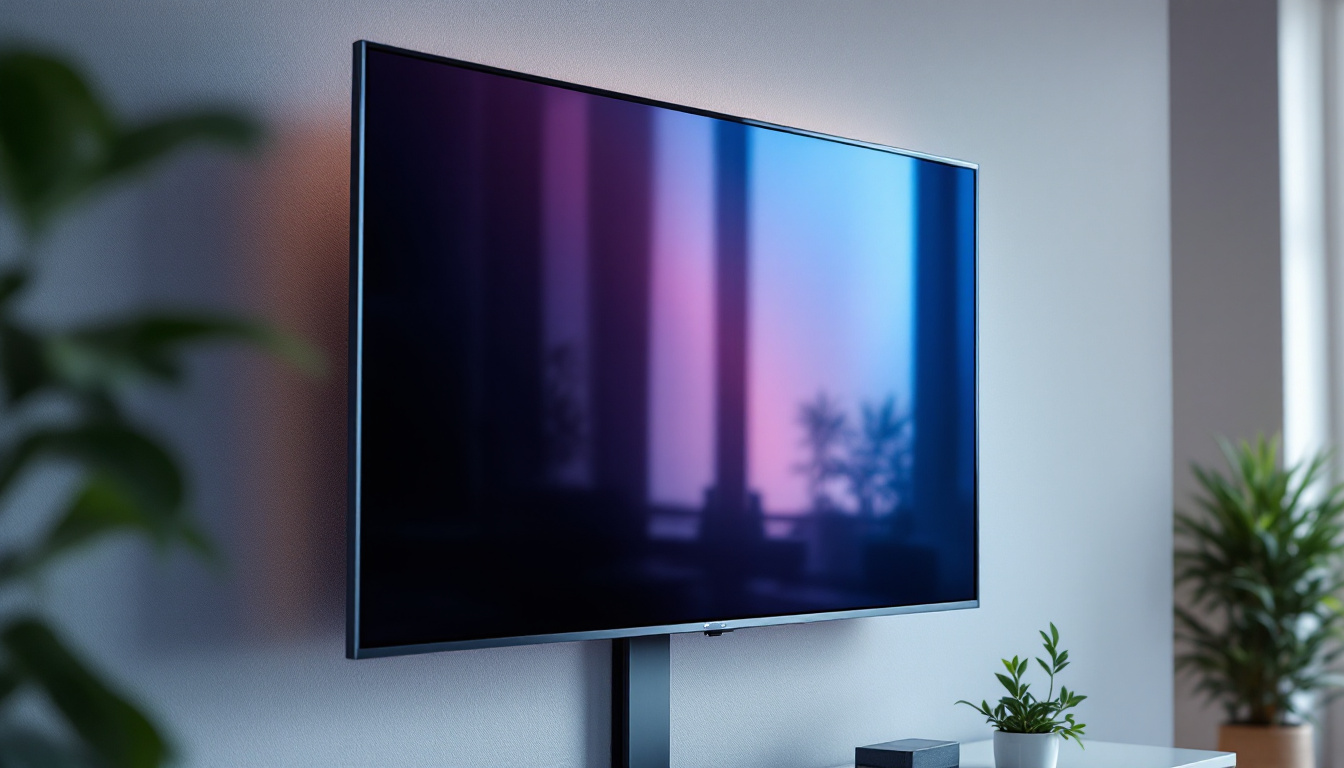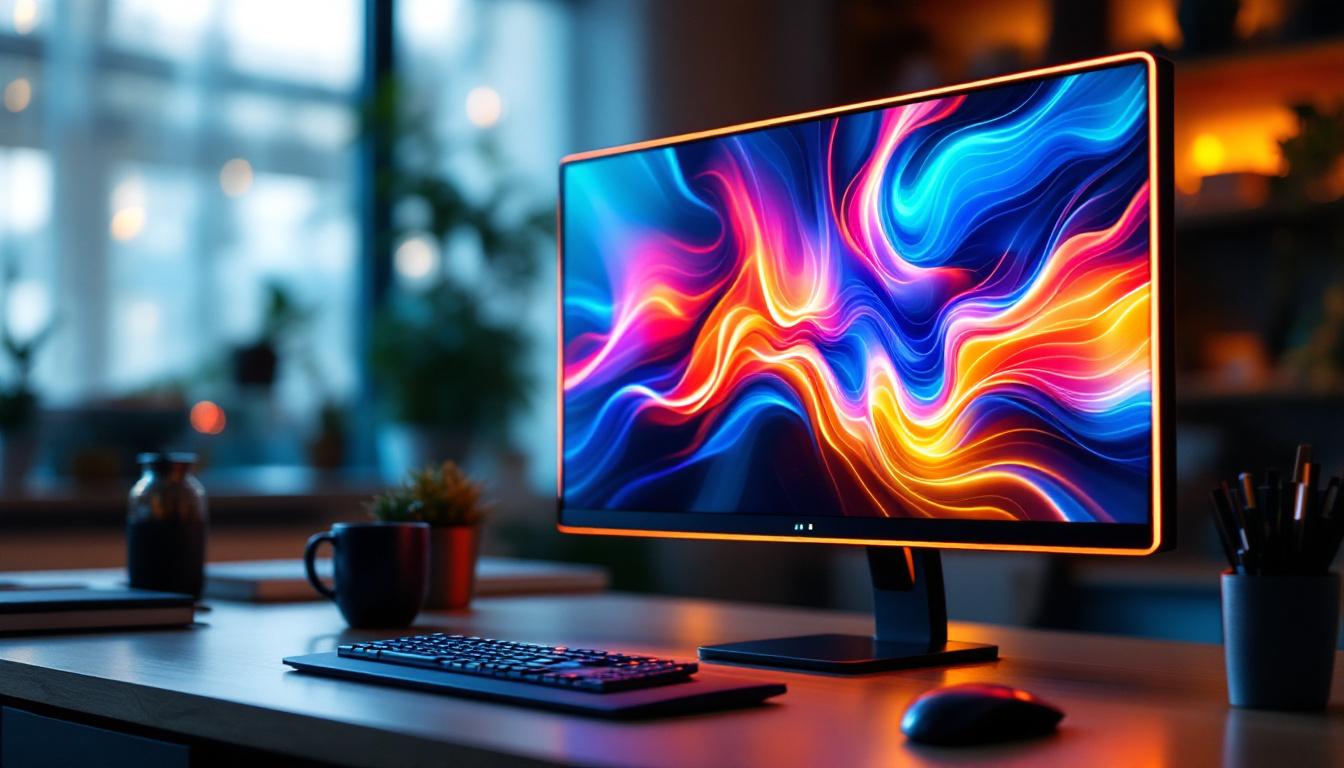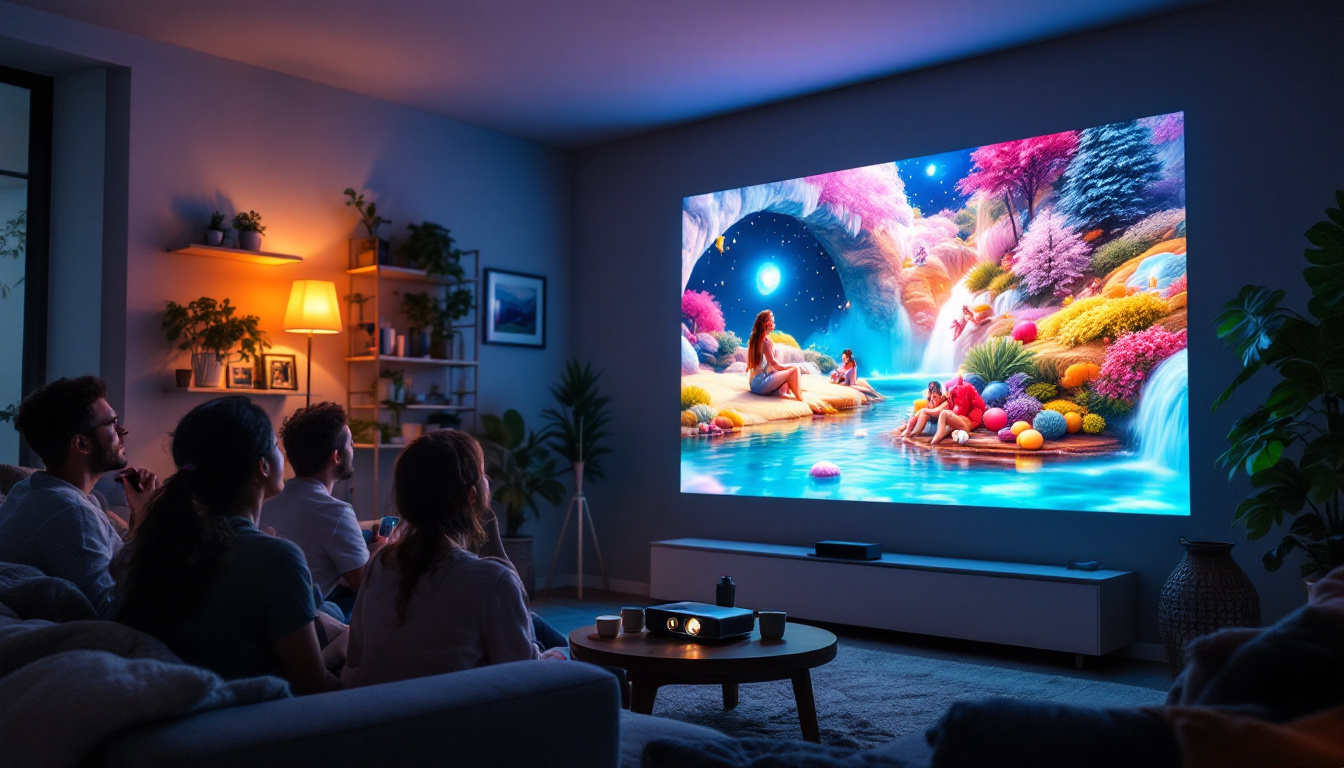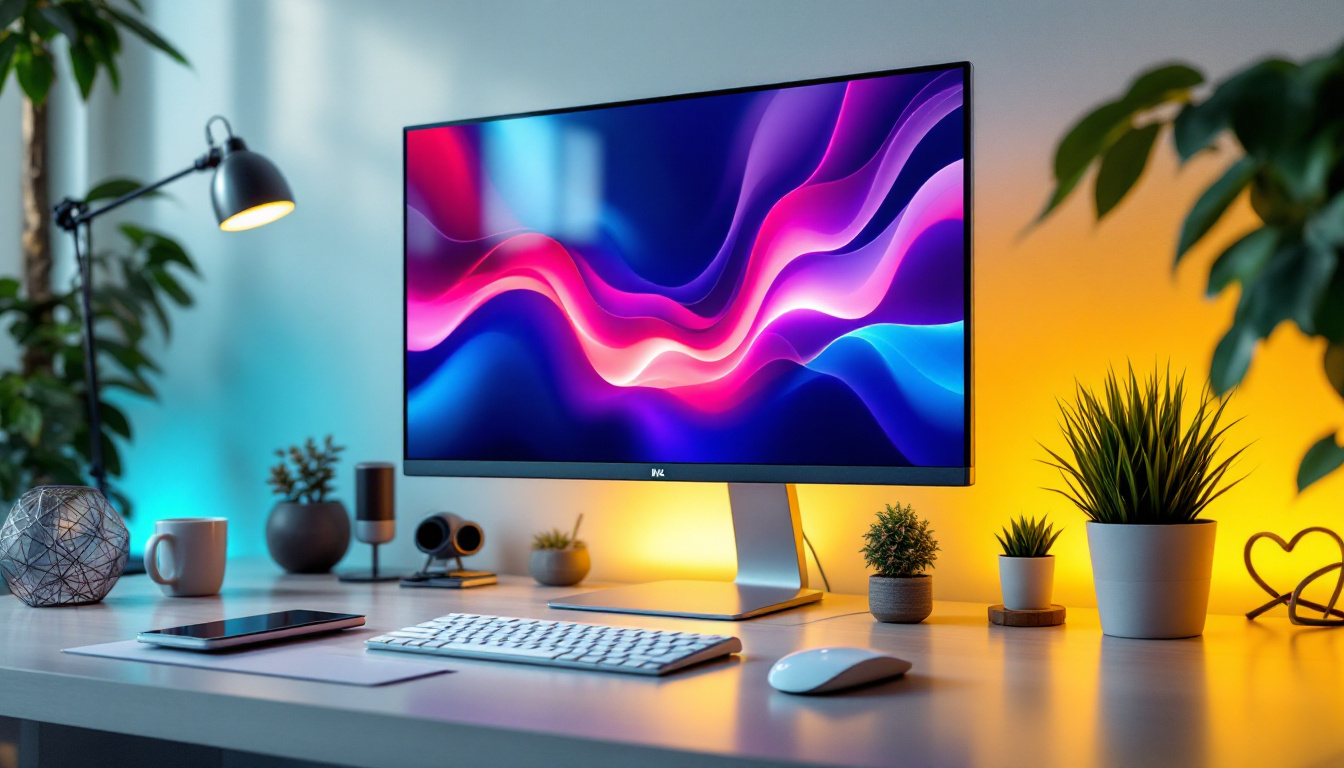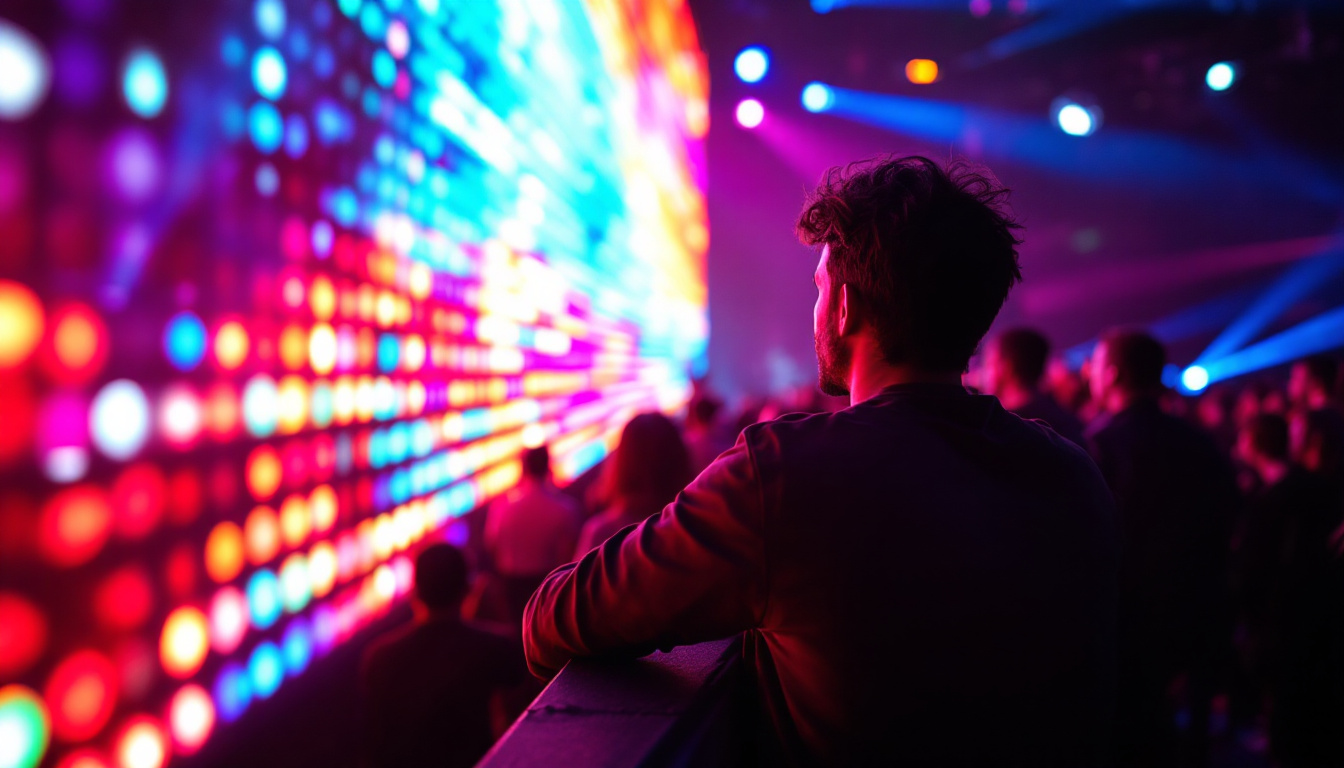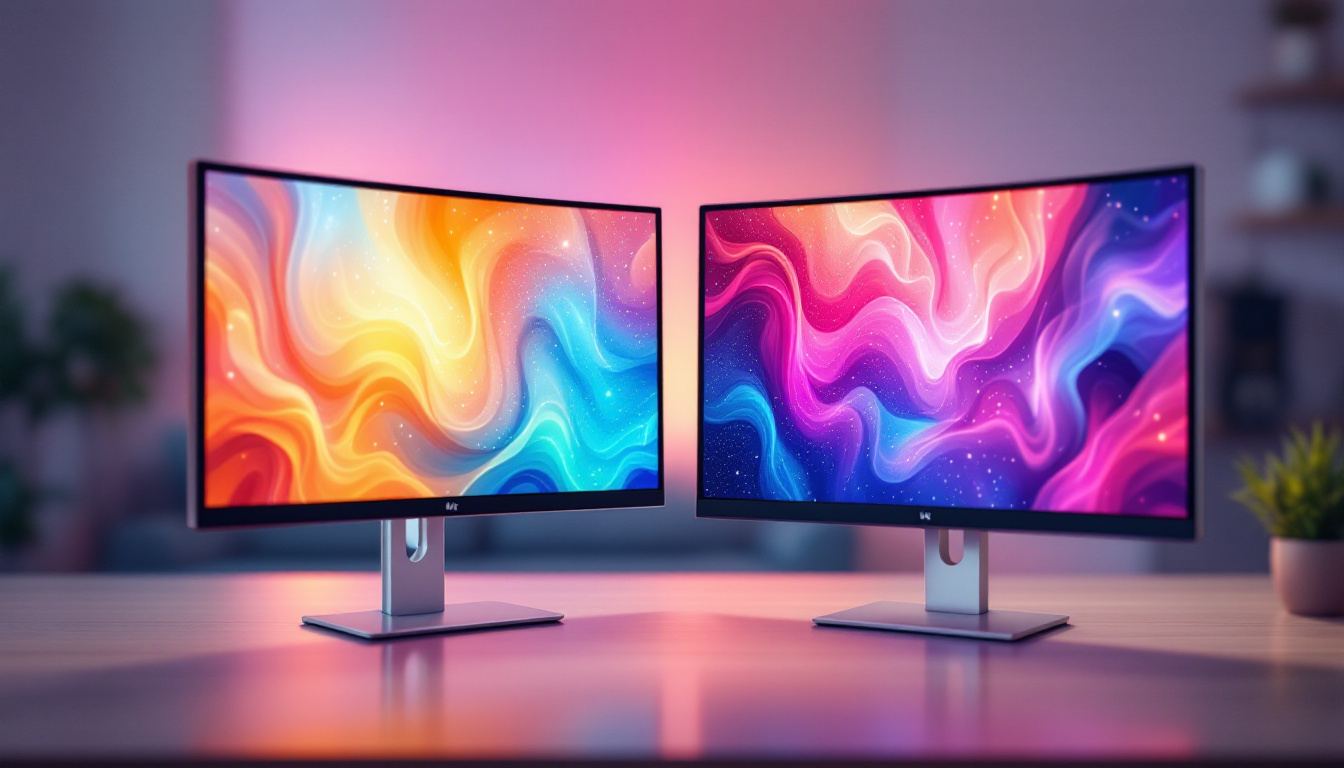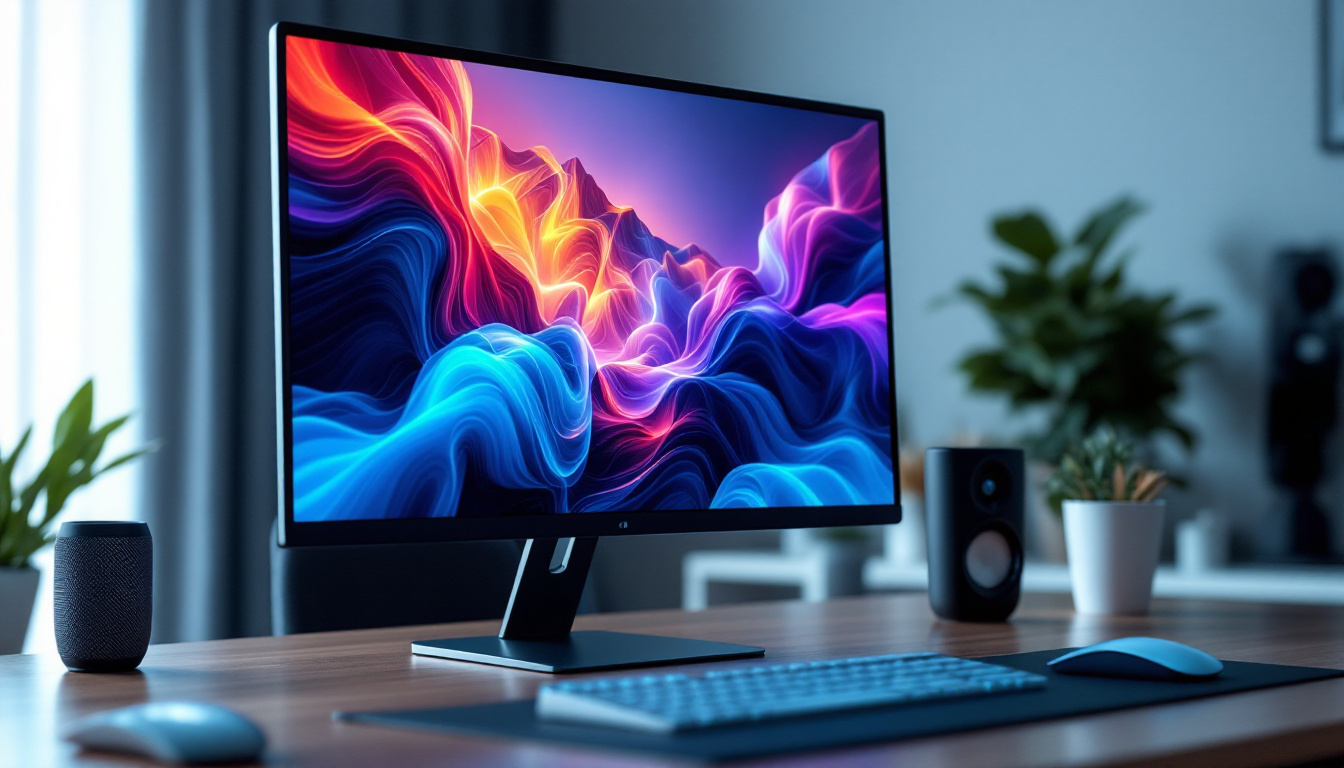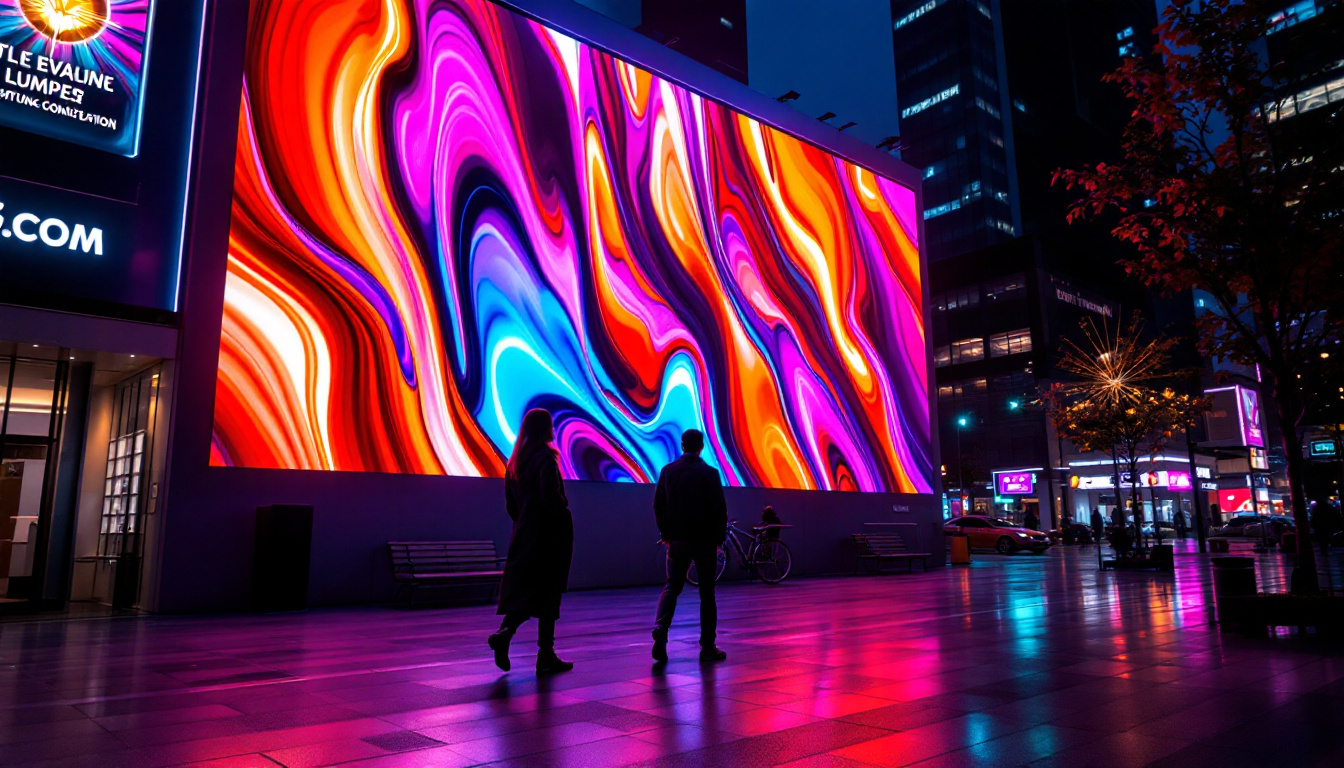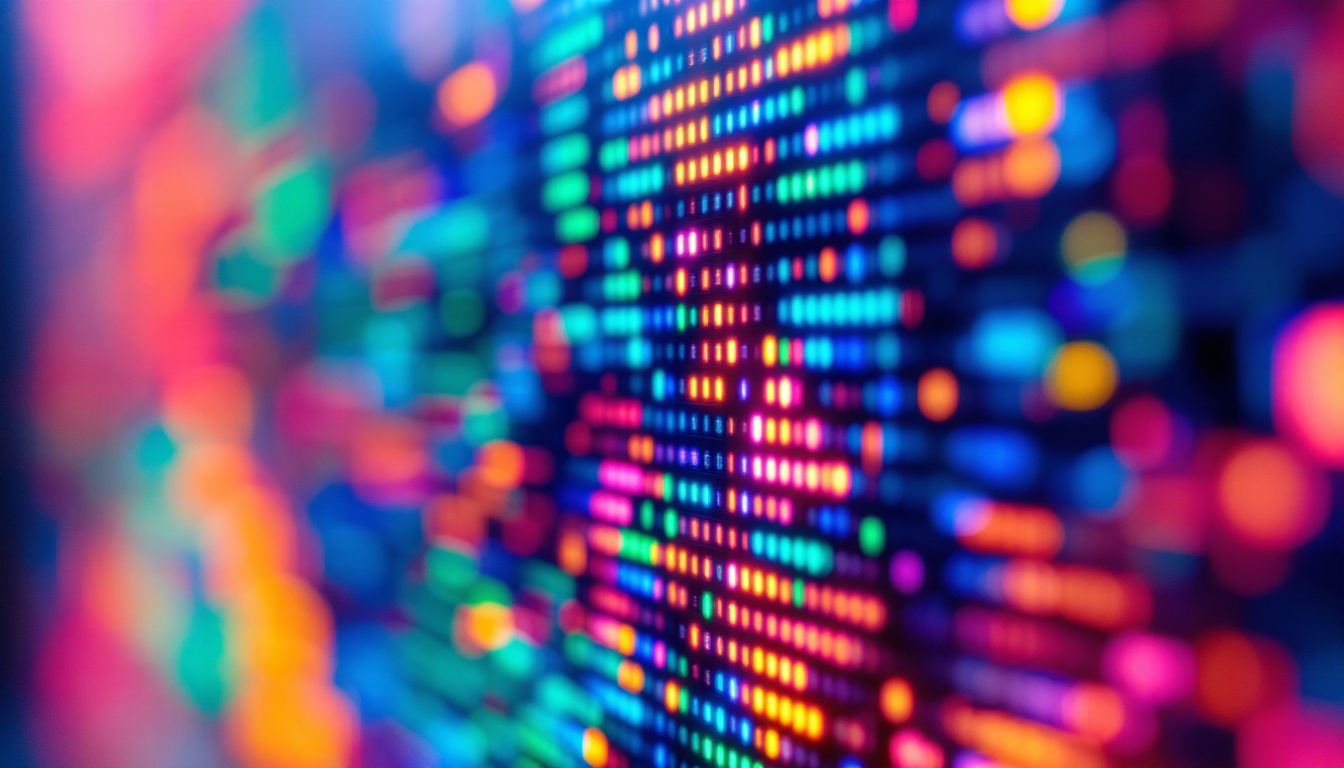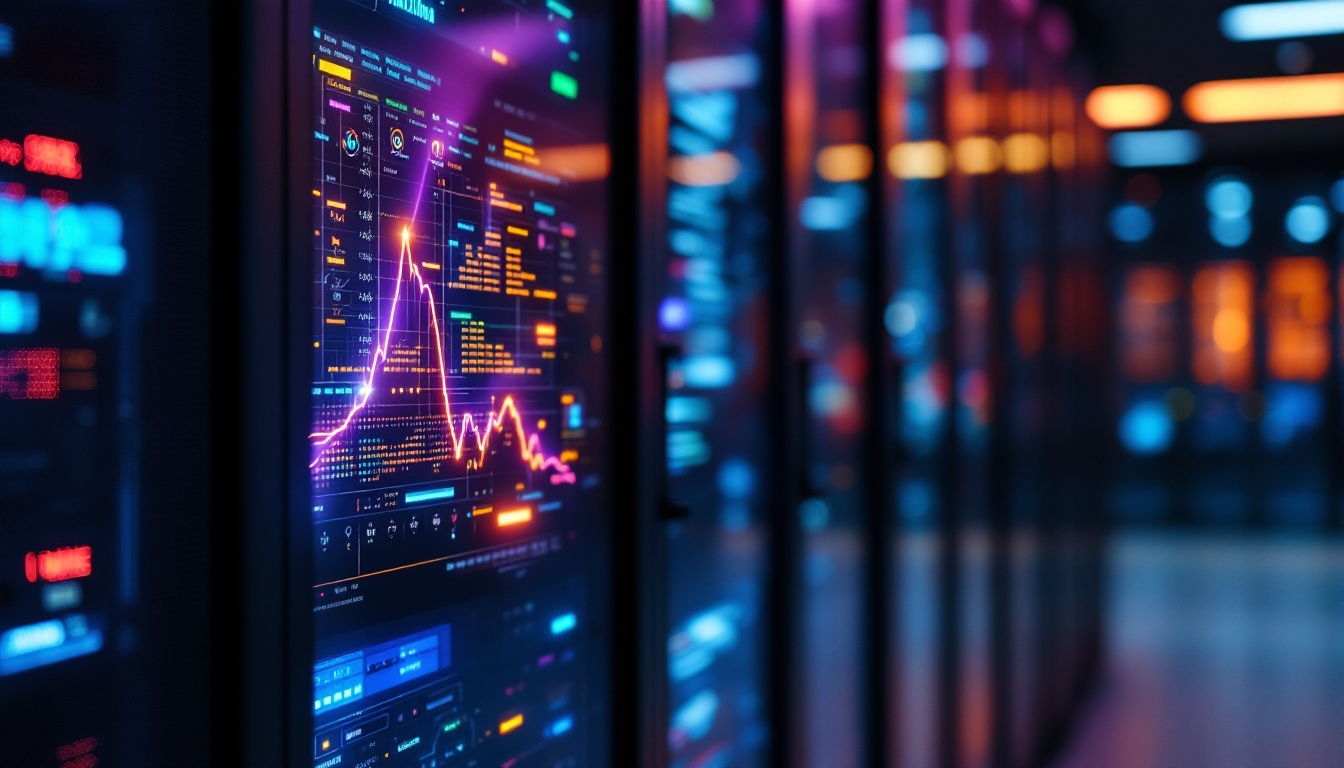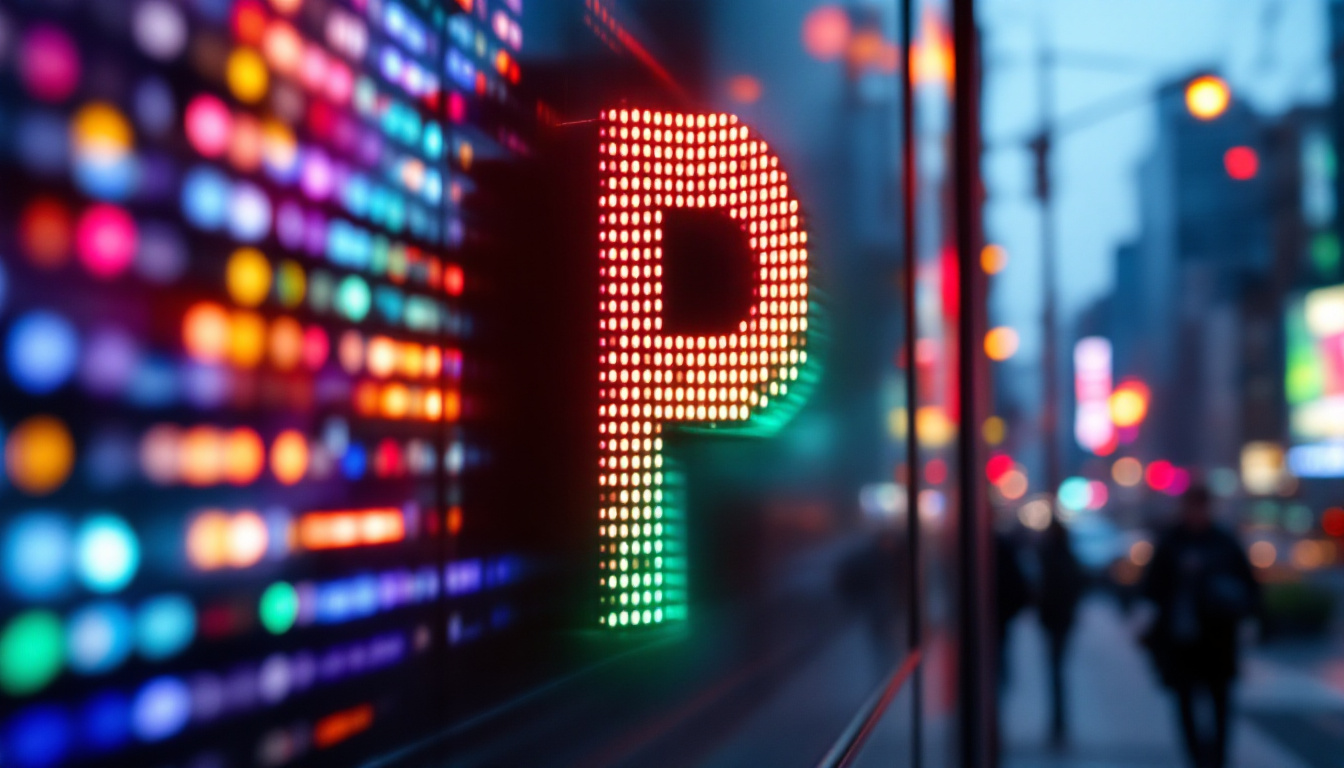Video Wall TV: LED Display Explained
In today’s digital age, visual displays have become an integral part of communication and entertainment. Among the various display technologies available, LED video walls stand out for their versatility, brightness, and visual impact. This article delves into the intricacies of LED video walls, exploring their technology, applications, and advantages.
Understanding LED Technology
LED, or Light Emitting Diode, technology has revolutionized the way images and videos are displayed. Unlike traditional LCD screens, which rely on backlighting, LED displays utilize individual diodes to emit light, resulting in brighter and more vibrant images. This advancement has not only improved the quality of visual media but has also led to more energy-efficient solutions that are environmentally friendly, reducing overall power consumption in homes and businesses alike.
How LED Displays Work
At the core of an LED display is a matrix of tiny diodes that can emit different colors of light. These diodes are grouped into pixels, and when combined, they create a full image. The brightness and color accuracy of LED displays are enhanced by the use of various technologies, such as RGB (Red, Green, Blue) color mixing. This mixing allows for the creation of millions of colors, providing a rich and immersive viewing experience that is particularly beneficial for applications like gaming, graphic design, and video editing.
When an electrical current passes through the diodes, they illuminate, producing a wide spectrum of colors. This process allows for high contrast ratios and deeper blacks, making LED displays ideal for environments with varying lighting conditions. Furthermore, advancements in dimming technologies, such as local dimming and HDR (High Dynamic Range), have further enhanced the visual performance of LED displays, allowing for more dynamic range in color and brightness that closely mimics real-life scenes.
Types of LED Displays
LED displays come in various types, each suited for different applications. The two most common types are:
- Direct View LED (DVLED): This type consists of individual LED modules that are directly mounted to create a seamless display. DVLEDs are known for their flexibility and can be used in various shapes and sizes. They are particularly popular for large-scale installations, such as outdoor billboards and stadium screens, where visibility from a distance is crucial.
- LED-backlit LCD: These displays use LED lights to illuminate an LCD panel. While they are not true LED displays, they offer many benefits of LED technology, such as improved brightness and energy efficiency. This type is commonly found in consumer electronics, such as televisions and computer monitors, providing a balance between performance and cost-effectiveness.
In addition to these common types, there are also specialized LED displays, such as OLED (Organic LED) and Mini LED technologies. OLED displays offer superior color accuracy and contrast due to their ability to turn off individual pixels completely, resulting in true blacks and vibrant colors. Mini LED, on the other hand, uses smaller LEDs for backlighting, allowing for more precise control over dimming zones and enhanced picture quality. These innovations continue to push the boundaries of display technology, catering to the ever-evolving demands of consumers and industries alike.
The Advantages of LED Video Walls
LED video walls offer numerous advantages over traditional display technologies, making them a popular choice for various applications.
High Brightness and Visibility
One of the most significant benefits of LED video walls is their high brightness levels. They can produce vivid images even in brightly lit environments, making them ideal for outdoor advertising, concerts, and sporting events. The ability to maintain visibility in challenging lighting conditions is a crucial factor for many users. Furthermore, the advanced technology behind LED panels allows for exceptional color reproduction, ensuring that images remain vibrant and true to life, even under direct sunlight. This feature not only enhances the viewer’s experience but also maximizes the impact of advertising campaigns, drawing in more attention and engagement from passersby.
Seamless Integration
Modern LED video walls can be configured to create a seamless visual experience. With minimal bezels between individual panels, viewers can enjoy a continuous image without distractions. This feature is particularly important in environments such as control rooms, where clarity and focus are paramount. Additionally, the modular design of LED panels allows for flexibility in installation, enabling users to create custom shapes and sizes that fit their specific needs. Whether for a corporate presentation, a high-profile event, or an immersive art installation, the adaptability of LED video walls ensures that they can meet diverse visual demands while maintaining a polished and professional appearance.
Energy Efficiency
LED technology is inherently more energy-efficient than traditional display technologies. LED video walls consume less power while providing superior brightness and color accuracy. This efficiency not only reduces operational costs but also contributes to a lower carbon footprint, making them an environmentally friendly choice. Moreover, many LED video walls come equipped with smart technology that allows for automated brightness adjustments based on ambient light conditions. This feature not only enhances energy savings but also prolongs the lifespan of the panels, ensuring that they continue to deliver high-quality visuals over time. As businesses and organizations increasingly prioritize sustainability, the energy-efficient nature of LED video walls positions them as a forward-thinking solution in the realm of visual displays.
Applications of LED Video Walls
The versatility of LED video walls allows them to be used in a wide range of applications across various industries.
Advertising and Marketing
In the world of advertising, LED video walls have become a staple for brands looking to capture consumer attention. Their high brightness and vibrant colors make them perfect for outdoor billboards and retail displays. Advertisers can showcase dynamic content that changes in real-time, ensuring that their messaging remains fresh and engaging.
Events and Entertainment
LED video walls are a common sight at concerts, festivals, and sporting events. They provide immersive experiences by displaying live feeds, graphics, and animations that enhance the overall atmosphere. The ability to create large-scale visuals allows event organizers to engage audiences in ways that traditional screens cannot.
Corporate and Control Room Use
In corporate environments, LED video walls are used for presentations, video conferencing, and data visualization. Control rooms, such as those in security and transportation, utilize LED displays to monitor multiple feeds simultaneously. The clarity and size of LED video walls enable operators to make quick decisions based on real-time information.
Choosing the Right LED Video Wall
When considering an LED video wall, several factors should be taken into account to ensure that the chosen solution meets specific needs.
Resolution and Pixel Pitch
Resolution is a critical aspect of any display technology. The pixel pitch, which refers to the distance between the centers of adjacent pixels, plays a significant role in determining image clarity. A smaller pixel pitch results in higher resolution and sharper images, making it suitable for close viewing distances.
For applications where viewers will be positioned close to the display, such as in retail environments or control rooms, a lower pixel pitch is essential. Conversely, for large venues where viewers are further away, a higher pixel pitch may suffice.
Size and Configuration
The size of the LED video wall is another crucial consideration. The display should be large enough to ensure visibility from various distances and angles. Additionally, the configuration of the wall—whether it is a flat, curved, or custom shape—can impact the overall viewing experience.
Installation and Maintenance
Proper installation is vital for the performance of an LED video wall. It is essential to work with experienced professionals who can ensure that the display is set up correctly and safely. Regular maintenance is also necessary to keep the system functioning optimally. This includes cleaning the panels, checking connections, and updating software as needed.
Future Trends in LED Video Walls
The technology behind LED video walls continues to evolve, leading to exciting developments in the industry.
Advancements in MicroLED Technology
MicroLED technology is emerging as a game-changer in the display market. Unlike traditional LED displays, MicroLEDs use microscopic LEDs that can be individually controlled, resulting in even higher resolution and better color accuracy. This technology promises to deliver stunning visuals and could redefine the possibilities for video walls in the future.
Integration with Smart Technology
As smart technology becomes more prevalent, LED video walls are increasingly being integrated with advanced features such as artificial intelligence and IoT connectivity. This integration allows for more dynamic content management, enabling users to tailor their displays based on real-time data and audience engagement.
Increased Focus on Sustainability
With growing awareness of environmental issues, the demand for sustainable display solutions is on the rise. Manufacturers are focusing on creating energy-efficient products and using recyclable materials in their designs. This trend not only benefits the environment but also appeals to consumers who prioritize sustainability in their purchasing decisions.
Conclusion
LED video walls have transformed the landscape of visual displays, offering unparalleled brightness, clarity, and versatility. Their applications span across various industries, from advertising to corporate environments, making them an essential tool for effective communication and engagement.
As technology continues to advance, LED video walls are poised to become even more sophisticated, integrating smart features and sustainable practices. For businesses and organizations looking to make a lasting impression, investing in an LED video wall is a strategic move that can enhance visibility and engagement in an increasingly competitive landscape.
In summary, understanding the technology, advantages, and applications of LED video walls is crucial for anyone considering this powerful visual solution. With the right approach, LED video walls can elevate the way messages are conveyed and experiences are shared.
Discover LumenMatrix’s Innovative LED Display Solutions
Ready to take your visual display capabilities to the next level? Explore LumenMatrix’s comprehensive range of LED display modules, designed to bring your brand to life and captivate your audience. Whether you need an Indoor LED Wall Display for your corporate headquarters, an Outdoor LED Wall Display for impactful advertising, or any of our specialized solutions like Vehicle LED Displays and LED Sports Displays, LumenMatrix has you covered. Embrace the future of visual communication with our cutting-edge technology that promises to enhance engagement and deliver your message with unparalleled clarity. Check out LumenMatrix LED Display Solutions today and see how we can transform your space into a dynamic visual experience.

